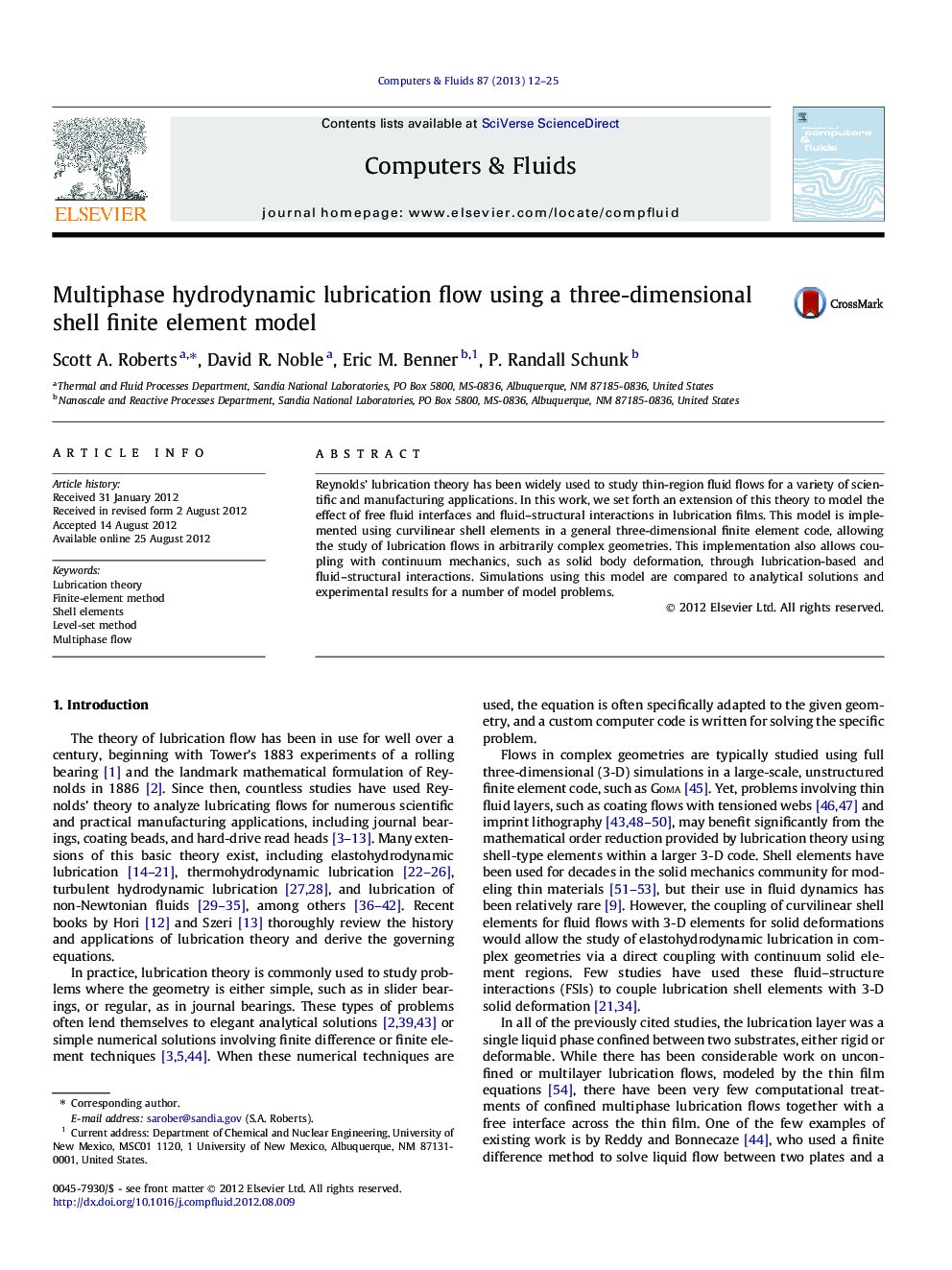| Article ID | Journal | Published Year | Pages | File Type |
|---|---|---|---|---|
| 762199 | Computers & Fluids | 2013 | 14 Pages |
Reynolds’ lubrication theory has been widely used to study thin-region fluid flows for a variety of scientific and manufacturing applications. In this work, we set forth an extension of this theory to model the effect of free fluid interfaces and fluid–structural interactions in lubrication films. This model is implemented using curvilinear shell elements in a general three-dimensional finite element code, allowing the study of lubrication flows in arbitrarily complex geometries. This implementation also allows coupling with continuum mechanics, such as solid body deformation, through lubrication-based and fluid–structural interactions. Simulations using this model are compared to analytical solutions and experimental results for a number of model problems.
